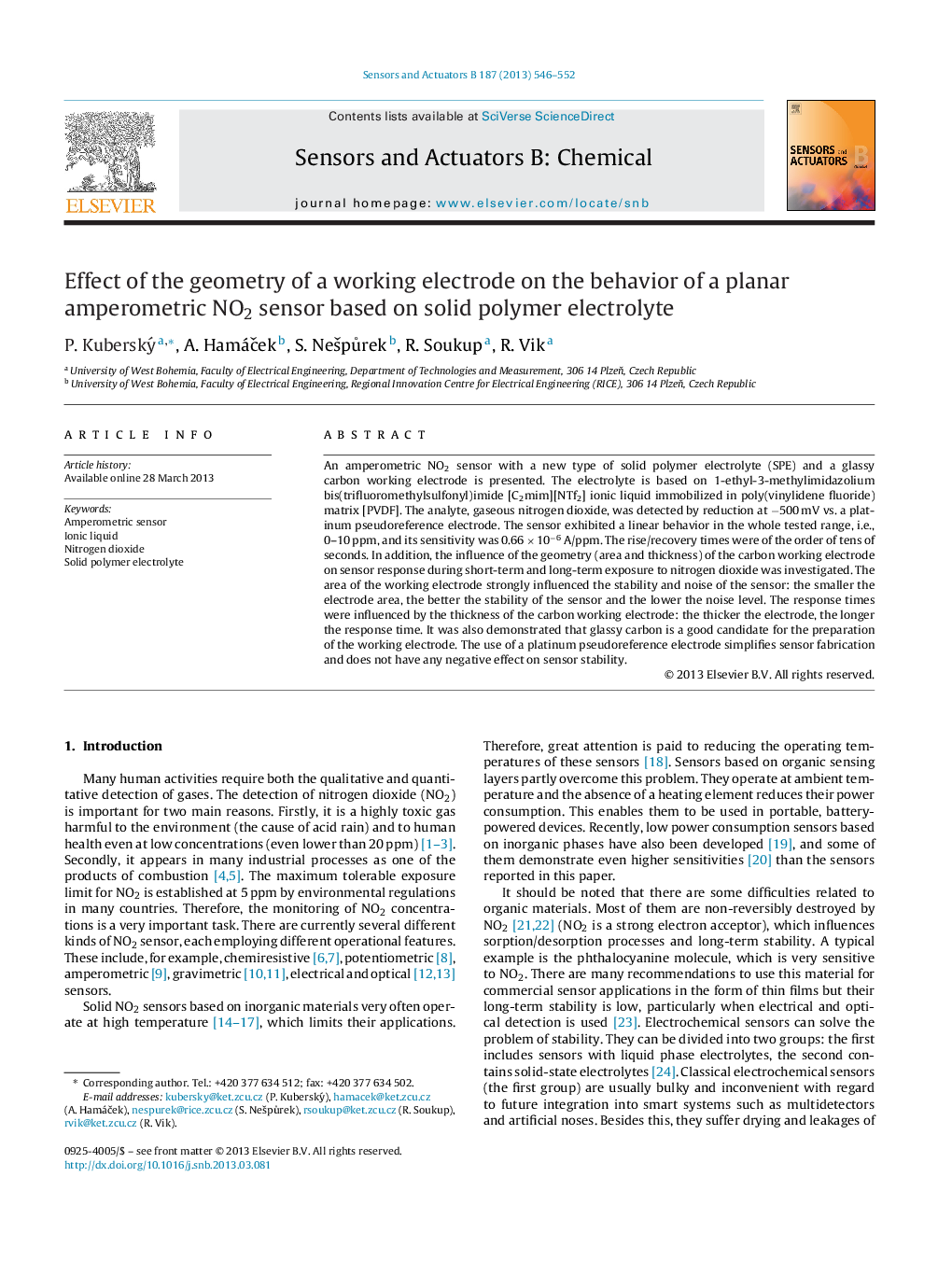| Article ID | Journal | Published Year | Pages | File Type |
|---|---|---|---|---|
| 7148829 | Sensors and Actuators B: Chemical | 2013 | 7 Pages |
Abstract
An amperometric NO2 sensor with a new type of solid polymer electrolyte (SPE) and a glassy carbon working electrode is presented. The electrolyte is based on 1-ethyl-3-methylimidazolium bis(trifluoromethylsulfonyl)imide [C2mim][NTf2] ionic liquid immobilized in poly(vinylidene fluoride) matrix [PVDF]. The analyte, gaseous nitrogen dioxide, was detected by reduction at â500Â mV vs. a platinum pseudoreference electrode. The sensor exhibited a linear behavior in the whole tested range, i.e., 0-10Â ppm, and its sensitivity was 0.66Â ÃÂ 10â6Â A/ppm. The rise/recovery times were of the order of tens of seconds. In addition, the influence of the geometry (area and thickness) of the carbon working electrode on sensor response during short-term and long-term exposure to nitrogen dioxide was investigated. The area of the working electrode strongly influenced the stability and noise of the sensor: the smaller the electrode area, the better the stability of the sensor and the lower the noise level. The response times were influenced by the thickness of the carbon working electrode: the thicker the electrode, the longer the response time. It was also demonstrated that glassy carbon is a good candidate for the preparation of the working electrode. The use of a platinum pseudoreference electrode simplifies sensor fabrication and does not have any negative effect on sensor stability.
Related Topics
Physical Sciences and Engineering
Chemistry
Analytical Chemistry
Authors
P. Kuberský, A. HamáÄek, S. NeÅ¡půrek, R. Soukup, R. Vik,
